Joe Glass, Executive Director & General Counsel
The Indianapolis Local Public Improvement Bond Bank
The Indianapolis Local Public Improvement Bond Bank
Learn about The Indianapolis Local Public Improvement Bond Bank including our ESG Program, News & Press Releases, Projects, and Finance Team.
Have questions? Reach out to us directly.
Learn about The Indianapolis Local Public Improvement Bond Bank including our ESG Program, News & Press Releases, Projects, and Finance Team.
In 1985, with the assistance of the Indiana General Assembly, the City of Indianapolis established the Indianapolis Local Public Improvement Bond Bank, the first municipal bond bank in the country. The Bond Bank is a municipal corporation that serves as the debt issuance and management arm of the City of Indianapolis and related “Qualified Entities.” These entities include special taxing districts, political subdivisions, and building/leasing authorities. Since its inception, the Indianapolis Local Public Improvement Bond Bank has issued nearly $13 billion in bonds and notes on behalf of various Qualified Entities of the City of Indianapolis and Marion County.
The Bond Bank’s structure allows for the centralized management and supervision of all debt issued by governmental entities throughout Marion County. By coordinating all locally-issued debt, including general obligation and revenue bonds, the Bond Bank provides leadership and guidance through the capital markets and the sale of municipal bonds and other debt instruments. For example, the Bond Bank coordinates the timing of all city and Qualified Entity bond sales. The Bond Bank also maintains relationships and regular communications with representatives from the national credit rating agencies and assists with securing ratings when necessary and providing frequent updates to the agencies on the City’s economy, employment figures, major developments, and the annual budget and audit process. The Bond Bank actively monitors local and national bond markets, as well as financial and economic trends that impact bond issuance structures, timing, and interest rates.
With the assistance of the professionals employed by the various Qualified Entities, the Bond Bank also prepares documents related to bond issuances, manages trustee banks and the collection and disbursement of bond proceeds. The Bond Bank is also primarily responsible for investor outreach and communication, including obligations under continuing disclosure agreements. By centralizing the management of all debt issued by local government entities, the debt management process is simplified and the Bond Bank can provide organization, structure, and consistency to investors interested in purchasing securities issued by Indianapolis entities.
Learn about our environmental, social, and governance program, and how we bring those values to life with green bonds, sustainable projects, and more.
Construction crews are ahead of schedule on downtown's Indiana Convention Center expansion, the state's first Signia by Hilton hotel and another Georgia Street remix.
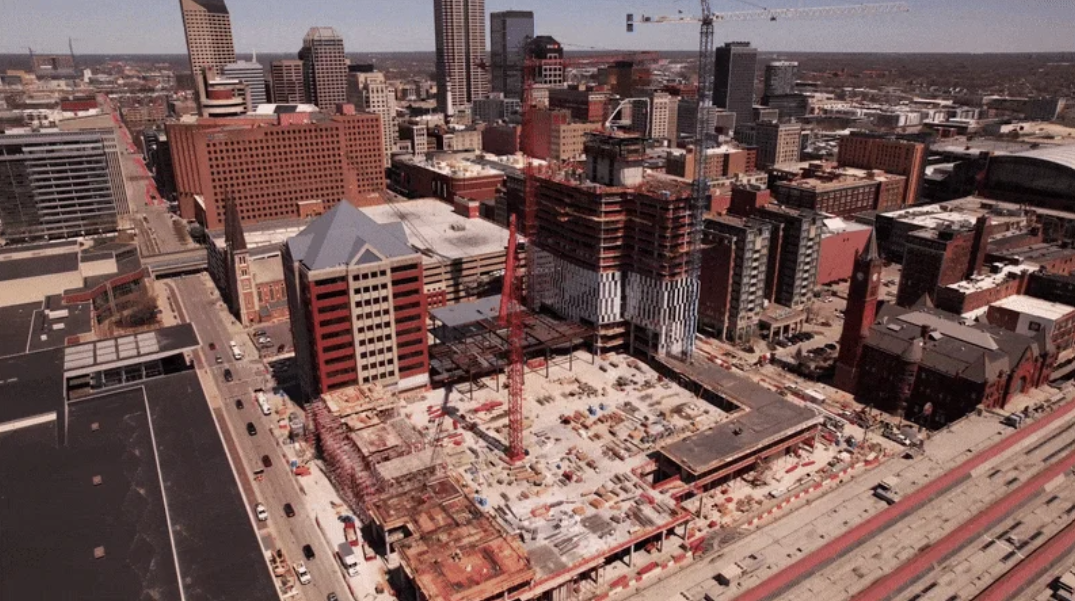
Why it matters: Even before completion, city leaders say, the development has helped the region's surging hospitality and tourism industry secure new events while providing momentum to a post-pandemic initiative aimed at strengthening Indianapolis' urban core.
The latest: The elevator shaft had been completed past the 25th floor of the 38-story Signia by Hilton, and CIB executive director Andy Mallon tells Axios the glass panels wrapping what will become Indy's tallest hotel should reach the 18th floor this week.
What they're saying: "It's almost $1.5 billion in investment in new projects just in that three blocks of Georgia Street alone," Mallon said. "It'll add 800 rooms of inventory to downtown, which is absolutely necessary."
State of play: Mallon said with the support of agreeable weather, crews are firmly en route to an anticipated completion date of late 2026 for the exterior hotel and convention center work.
Yes, but: The price tag on the roughly $500 million Signia has gone up.
Reality check: The Hogsett administration took over the funding of the hotel in May 2023 when the original developer, Kite Realty, was unable to secure private financing.
Zoom in: The project also furthers the downtown resiliency strategy launched by Mayor Joe Hogsett's administration in 2022.
Zoom out: Department of Metropolitan Development director Megan Vukusich said this development — along with projects like the Elanco World Animal Health HQ and the Cole Motor Campus — represents the heart of that effort.
Go deeper: Convention Center expansion attracts attention — and cash
A new $30 million bridge that links the 16 Tech Innovation District with the hospitals along 10th Street and the Indiana University School of Medicine is the first bridge in Indianapolis to devote more space to pedestrians and bicyclists than to vehicles.
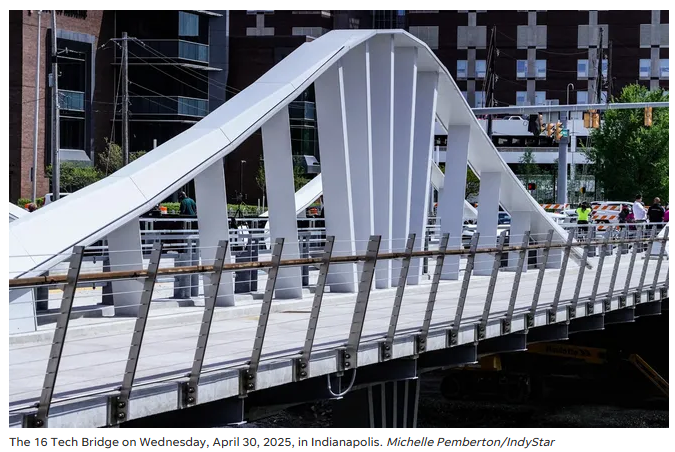
Spanning Fall Creek near where it meets the White River, the 342-foot-long "16 Tech Bridge" features two lanes of car traffic surrounded on either side by protected multi-use paths. The wave-like steel and concrete structure connects two burgeoning economic centers and creates a seamless nexus between the White River Trail and the Indianapolis Cultural Trail for cyclists and pedestrians, the architects say.
Initial plans called for the bridge to have four lanes for vehicles and less space for other users, Indianapolis City-County Council President Vop Osili said at an April 30 grand opening. But residents in near northwest side neighborhoods like Riverside and Ransom Place, including members of the cycling club Riverside Riders Indy, convinced city leaders and architects to change course on the final design for the bridge.
"Even more than being a reflection of the water and the trees of which it is a part," Osili said to a crowd gathered for the opening, "it is a reflection of collaboration, a reflection of possibility and proof of what can happen when we build with the community and not around it."
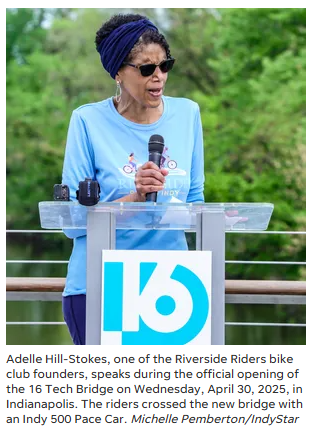
The new structure blends the functions of two nearby bridges that also link downtown Indianapolis with the somewhat isolated 16 Tech district, home to the AMP food hall and three facilities that house more than 1,000 employees in the health and life sciences industry. Less than a half-mile east, the Indiana Avenue bridge features wide lanes for cars and narrow sidewalks. Fewer than 200 yards west, the Dr. Beurt SerVaas Bridge provides a skinny path for cyclists and walkers.
Each bridge's shortcomings called for a compromise, Riverside Riders founder Adele Hill-Stokes said. The resulting structure, designed by German engineering firm schlaich bergermann partner and New York-based firm Practice for Architecture and Urbanism, finished about a year later than projected in 2021.
"Now we can ride from Riverside Park down the (Riverside Promenade), pick up White River Trail, and then come across the 16 Tech Bridge over to the Cultural Trail and never see street," said Hill-Stokes, who grew up in Riverside in the 1960s and has owned a home there the past two decades. "And that is a great feeling. The cars are just starting to get used to more bikers, but it's still a little hesitant."
The new bridge's spacious multi-use paths feature benches made with wood from trees felled for the project and color-changing light displays for community events. The road over the bridge is called Confluence Way.
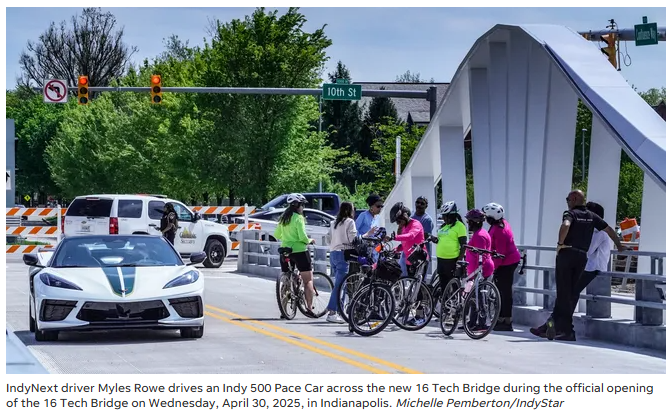
Indianapolis taxpayers and the Lilly Endowment footed the roughly $30 million bill to design and build the 16 Tech Bridge, according to 16 Tech officials.
By comparison, the Henry Street bridge extending the Indianapolis Cultural Trail to the new Elanco Animal Health headquarters is expected to cost about $21.2 million. That bridge is projected to open in early 2026.
More than $90 million of taxpayer money has gone toward public infrastructure projects in the 16 Tech District, overseen by the nonprofit 16 Tech Community Corp., since its 2020 opening, officials say.
Indianapolis Mayor Joe Hogsett said during the grand opening that the bridge is a necessary link between downtown hubs of the state's "most vital industries," including biomedical sciences and advanced manufacturing, and growing neighborhoods near the urban core.
The district boasts $300 million of "vertical development" to date and 235 companies. The Vanguard, a 289-unit apartment complex, will open this summer as the district's first residential project, with 15 units reserved for residents earning no more than 30% of the area median income.
Hundreds more residential units, new roads and a three-acre park with public art are expected in the coming years.
The Grassy Creek Environmental Community Center and nature playground will open to the public on Tuesday, May 20 with a ribbon cutting ceremony.

A new $12 million environmental community center and nature playground is opening soon in Indianapolis, Mayor Joe Hogsett and Indy Parks announced Tuesday, April 22.
The Grassy Creek Environmental Community Center and nature playground will open to the public on Tuesday, May 20 with a ribbon-cutting ceremony at 3510 N. German Church Road on the city's far east side.
Grassy Creek Park, which sits at over 240 acres, will become the city’s fourth "nature and environmental education focused park," officials said, joining park centers at Eagle Creek, Holliday and Southeastway parks.
The nature playground will have a variety of features for children of all ages. The community center will have multiple rooms that will be used for programming, and some will be available to rent. Programming will focus on environmental education and include a bird-watching room. If you are interested in renting one of the center's community rooms, officials ask that you visit the center on or after May 20.
“Nothing better demonstrates the City’s commitment to the environment and the celebration of Earth Day than the historical investments going into our parks,” Hogsett said. “Thanks to funding from the City and our philanthropic partners, east side residents will soon get to enjoy the new nature park hub of Grassy Creek Environmental Community Center and the nature playground.”
This project was funded through the city’s Circle City Forward Initiative and the Lilly Endowment Grant, officials said.
“What better way to celebrate Earth Day than with the announcement of the opening of a new Environmental Community Center and nature playground right here on the far east side,” said Councilor Rena Allen, District 15. “This space represents a powerful investment in environmental education, sustainability and community wellness. It’s a place where our youth can connect with nature, where families can learn and grow together, and where we honor our commitment to protecting our environment for future generations.”
The center’s hours will be 10 a.m.-6 p.m. Monday through Friday and 10 a.m.-2 pm on Saturdays, with the playground and park grounds open daily from dawn to dusk.
“Access to nature boosts the quality of our lives,” said Phyllis Boyd, Indy Parks director. "These new assets at Grassy Creek Park will ensure that residents have another nature park for play and enjoyment.”
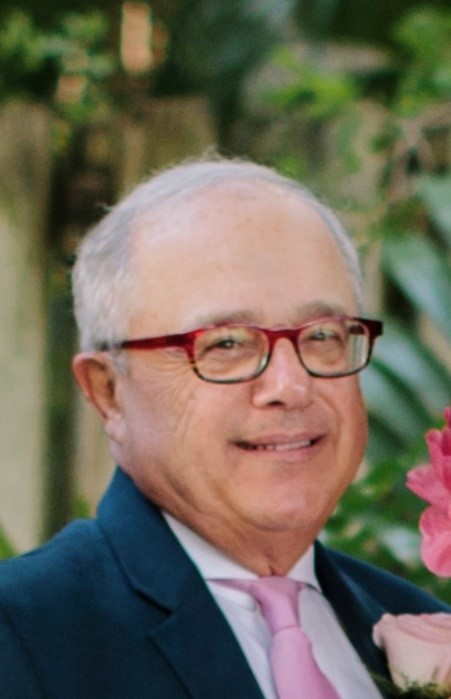
.nmZPlUaZ.png)
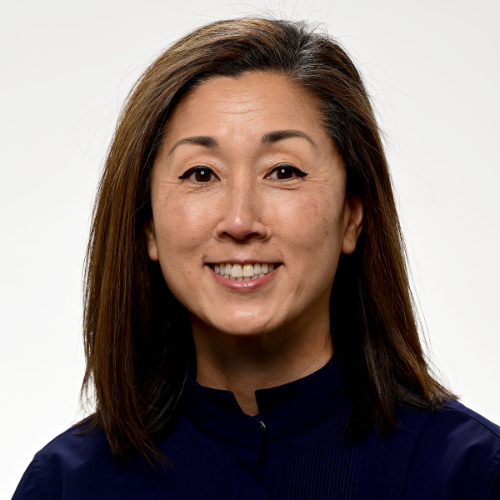

Have questions? Reach out to us directly.